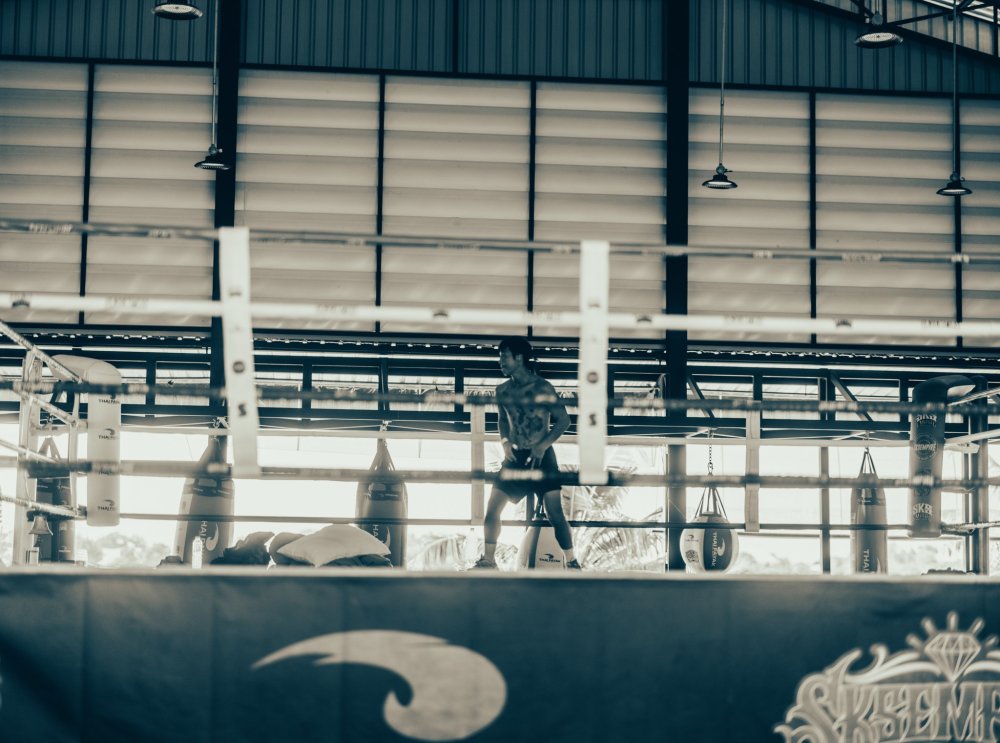All Activity
- Yesterday
-
Two caps show that in 1976 Rajadamnern was surging in popularity, and Lumpinee struggling. This post mentions that Lumpinee's prospects should be looking better now that the young promoter SongChai has regularly started promoting there. SongChai would of course end up ushering in the great Golden Age of Muay Thai principally centered around his promotions at Lumpinee in the 1980s and 1990s. thank you to Lev for the call out machine translate: "Chapter 2: “The Rise of Ratchadamnoen” Yes... Now that we've mentioned Lumpini Stadium, we should also talk about Rajadamnern Stadium, especially the "promoters" of Rajadamnern, who were strong and generated the highest income for the stadium in 1975, breaking records from the past to the present. The promoters of Rajadamnern were different from those of Lumpinee. During the time that "Sia Saelee" began to become famous in this industry as an assistant promoter of the Blue Corner fights, almost every promoter of the stadium surrendered under his "paws" because he had many boxers under his control. He invested his money to bring many boxers under his control. Even Napha Nakpathom, the great man of "Lord of the East" at present, had to submit and follow him like he was a subordinate! This is because Sia is a “connector” between the promoters of Rajadamnern Stadium, since many people depend on him for cooperation in organizing boxing matches. Sia’s name is therefore heard throughout the industry, generating a lot of income for Rajadamnern Stadium last year. Rajadamnern Stadium is like a mother stadium because promoters try to find fresh boxers to join the program, trying to find boxers with potential to join (read on page 20)" "• Before leaving, Colonel Uthai predicted that the Lumpini stage was going to start to get better, and it seems to be true because now they have hired a skilled young man, Songchai Ratanasuban, as the new promoter.... As for the secret behind “Ko Hong” Phong Thawornwiwatbut being dragged into refusing to be the Lumpini promoter, Colonel Uthai knows who it is...."
-
Serious Gyms In Chiang Mai
Kevin von Duuglas-Ittu replied to melkhadir's topic in Gym Advice and Experiences
Hard to give broad gym recommendations, Kru Manop, Hongtong and Sit Thailand are popular and respected. Here is Sylvie's recommendation list: -
In the issue there is this ranking of Lumpinee in 1971. The lowest weight ranked in 106 lbs, called Light Flyweight (notable because small fighters are being represented, as discussed below). It may be 108 lbs, but it graphically looks like 106. The champion is Daotong Sityodtong. Ranked number 1 is Orachunnoi Hor.Mahachai. Glairung is the 112 lb champion. The highest weight is 126 lb, Featherweight. The champion is Soleman Ittianuchit, Fahsai Taweechai is number 1 rank. Notable that the weights do not reach into the 130-145 lb classes. thank you Lev for the call out of the graphic. It looks like Kru Tao (discussed below), organized the Lumpinee Belt around low weight fighters in the early 70s:
-
This Gila Muay documents Dieselnoi's victory over "The Immortal Yodmuay" Wichannoi, the fighter Dieselnoi called his "kru in the ring". When we came to interview Wichannoi (who has since passed), Dieselnoi went to his feet in a sign of deep respect. Our interview linked below. Dieselnoi considers beating the powerful, ageless Wichannoi - who he had lost to twice, losses which ended the longest stadium winning streak in history - to have been his greatest victory. quality jpegs of the edition from Sylvie's beginning collection, if anyone can translate (machine or otherwise - you can upload jpegs to Google translate and it will give you English text translation), comments welcome on content. Insight into the era. You can follow this sub-forum and get email alerts for any new postings. If you share images from these captures please credit the Muay Thai Library Preserve The Legacy project and this forum. Any support for the project by subscription is seriously appreciated.
-
This is Kru Tao (photo from 1976, Gila Muay Thai magazine) mentioned by the author, the promoter who changed the sport by emphasizing smaller, younger fighters: "leading the young promoter “Kru Tao” Chana Supkaew the promoter of Suek TaharnEk to begin making fights between smaller fighters, the ones others don’t care about, for only 5,000-6,000 thousand Baht per fighter."
-
These portions seem to be from two different issues of Gila Muay Thai in April of 1976. They were folded together with a third magazine, so the dates were not clear and it took some work to recognize the fragments (thank you Lev for helping). Putting them both here together. Of note, in them are the April 1976 Lumpinee rankings. quality jpegs of the edition from Sylvie's beginning collection, if anyone can translate (machine or otherwise - you can upload jpegs to Google translate and it will give you English text translation), comments welcome on content. Insight into the era. You can follow this sub-forum and get email alerts for any new postings. If you share images from these captures please credit the Muay Thai Library Preserve The Legacy project and this forum. Any support for the project by subscription is seriously appreciated. Gila Muay Thai Early April 1976 (partial) Gila Muay Thai Later April 1976 (partial)
-
Gila Muay Thai - December 15, 1971 quality jpegs of the edition from Sylvie's beginning collection, if anyone can translate (machine or otherwise), comments welcome on content. Insight into the era. You can follow this sub-forum and get email alerts for any new postings. If you share images from these captures please credit the Muay Thai Library Preserve The Legacy project and this forum. Any support for the project by subscription is seriously appreciated. above, Wichannoi and Pudpadnoi I believe this fight Pudpadnoi would lose:
- Last week
-
magazine fragments (some of these issues had very few pages). Two of these pages (lateral) were kind of stuck in between the other pages, so maybe from another issue. quality jpegs of the edition from Sylvie's beginning collection, if anyone can translate (machine or otherwise - you can upload jpegs to Google translate and it will give you English text translation), comments welcome on content. Insight into the era. You can follow this sub-forum and get email alerts for any new postings. If you share images from these captures please credit the Muay Thai Library Preserve The Legacy project and this forum. Any support for the project by subscription is seriously appreciated. cover, page 1
-
There is also an aspect of the article which should probably be read polemically, as there is some inconsistency in his examples. He complains about a very low weight fight with Nokweed Davy (sub 100 lbs), but Nokweed Davy was already fighting in the 130 lb weight class (since 1985) at the time of the writing. He is complaining less about size in this example, than about age, perhaps fighting in the late 1970s as a youth (?, how old would he be if he couldn't make 100 lbs?). And in using the example of Oley at the time of this writing he was already on his way up to fight for the 122 lb Lumpinee belt, eventually to be vying at 126 lbs. In other words will be reaching weights he finds more acceptable. Again, a question perhaps more of age, or fame acquired at a young age? Karuhat has told us that something that made you a superstar in the Golden Age was that you were a star all the while you were developing. Fans followed your rise. You were famous as you passed through the weight classes. Perhaps this was much more the case during the shift towards lower weight classes the author is protesting, shining a light not only on smaller fighters (like Hippy, who remained small), but also on younger fighters. This could add to the man's man picture of an older 135-145 lb Nak Muay.
-
When investigating the example of Western Boxing as a possible influence upon body size, one has to include the counter example of Pone Kingpetch, Thailand's first boxing world champion at 112 lbs in 1960s. He achieved immortal fame as a Thai in this, but why did his example not exert a pressure on Thailand's Muay Thai? Was the body-model already firmly established, and his achievement regarded separately? Or, perhaps he did exert some media-driven inspiration upon smaller Muay Thai fighters of the 1960s. Was some of the body-size bias something endemic to a developing nation, that may regard its rural population lessor tiered by type?
-
Some speculative thoughts. The first thing that really stands out is body-type. Today, and even since the 1990s, larger weight class Thais mostly became known for their fights with farang. The common sense one has gotten is that Thais just are on average smaller bodied than Western fighters, so it makes good sense that the majority of Thailand's Muay Thai excellence would be found along that bell curve, in the smaller weight classes. The piece draws our attention to the fact that for decades preceding the Golden Age this simply was not the case for the most famed fighters in Bangkok. In fact, he argues that the renowned Golden Age fighters such as Karuhat, Kaensak and Hippy would not even have been able to fight in the National Stadia in the 1960s, and may have at best been able to fight in the suburb stadia of Bangkok in the 1970s. They would never headline a National Stadia card in the past. In terms of my interest, this presents a very interesting picture of the history of Muay Thai as a practice, sport and art in Thailand, principally in that the core of the bell curve of Thai-bodied fighters may not have been very represented by fighting in the capital for much of Muay Thai's modern, 20th century history. This invites us to imagine - and this is something to research - that there has been perhaps a century-long history of elite Muay Thai skills that developed in provincial fight betting circuits (he mentions renowned fighters of low weights), that was seldom if ever recorded in Capital history...until the National Stadia started to open up to the average bodied fighter in the 1980s (?). This is to say, the elite idolized small-bodied fighters of Thailand's Golden Age may have had historical counterparts that have been lost to provincial and suburb lore throughout the century. The greater question may be: Why did the Capital form an ideal type in the higher weight classes (135-145 lbs), if there simply were fewer fighters in the talent pool? My own quite vague suspicion is that this had to do with the exemplar of Western Boxing, whose own weight classes skew esteem higher and higher by weight. Was the Capital form of stadium Muay Thai reflecting the international fame of Western Boxers? And, post-World War 2, did the increasing influence of American military also bring added emphasis on larger bodied Thai fighters? Western Boxing's influence on Thailand's Muay Thai, and in particular Bangkok Muay Thai goes back to the 1920s. The British Colonial form had imported boxing throughout Southeast Asia, and Siamese/Thai boxers would become prominent in the circuit. You can read about this influence as seen in the 1930s here: What Was Early Modern Muay Thai Like? New Film Evidence (1936): Samarn Dilokvilas vs Somphong Vejasidh. Famed fighters of the 1940s were big powerful men like Sagat's grandfather Suk, a feared convicted murderer. Below, famed American boxer Rocky Marciano refereed a boxing fight at Rajadamnern in 1969, said to have begun the tradition of a boxing fight on every Rajadamnern stadium card from that point forward. By the time of the Golden Age every card in the National Stadia - at both Rajadamnern and Lumpinee - would feature at least one Western Boxing fight. It does not seem a stretch to imagine that the Western Boxing example (at first by the British in the 1920s and 30s, and by the Americans in the 1950s-60s) provided a template which pushed the model for Thailand's Muay Thai excellence in the Capital towards the larger weight classes. When talking to Dieselnoi about his legendary fight vs Samart, The Holy Grail fight, two GOATs, Samart a 126 lber fighting up and Dieselnoi a 135 lber fighting down at 130 lbs, he definitely spoke about this picture of size, quality and reputation. He echoed the attitude of the op-ed piece at top, saying something along the lines of: The "real" fighters were at 135 (his weight class). You can see this in Western boxing of course, as the greatest fighters are often the Heavy Weights - though aficionados will argue for lighter weight greatness. He seemed to give off somewhat the opinion "how could he complete with me, he wasn't even in a real weight class", a skewing which we find fully expressed in the 1991 piece (though it names Samart at 126 among the properly weighted Yodmuay). The writer is mortified that fighters in the 108-118 lb weight classes are even considered "yodmuay", calling the designation fabricated...presumably fabricated by the business of the sport which had fallen to the smaller fighter initially because they were so cheap (and plentiful). If these suspicions are true one cannot help but see that for many of the decades of Bangkok Muay Thai the actual greatness of Thailand's Muay Thai may not have been represented, but rather skewed towards a Western or Internationalized image. There may have been two "Muay Thais", that of the Capital, and that of the provinces. Without a historical record of provincial fighting though, we would have to rely on still-living oral histories of Thailand's provincial fighting past, histories that may very well also be colored by the bias toward the Capital as the rightful standard-setter of values. There is in the piece as a related rhetoric towards the lower weight fighter, which he sees now (1991) overrunning Bangkok fighting. This is found in the way he pushes the weights he objects to into the 80-90 lb range, and how he talks about diet and strength. The new low-weight fighter of the Golden Age seems to embody conflicting images of both weak (needing to eat-up before a weigh-in to qualify, really almost a child (who else would be 85 lbs?), but also powerful (95% of Golden Age fighters being just artless power fighters)...not to mention deceptive (an "actor" deserving of awards...note: the fighter Inseenoi literally presented as, or was a Leekay actor). These very well be stereotypes of the provincial Thai, who is both scrawny, young and undeveloped, but contradictorially also rural, farm-strong (artless) and powerful...all the while being only 112 lbs. There are some aspects of his rhetoric which give the feeling that the provincial riff-Raff have been let into the esteemed Capital stages, initially because their labor is so cheap for promoters. This indeed paralleled the influx of provincial workers which poured into the city during the economic boom of the 1980s-90s for jobs, a huge populace wave of prosperity which actually buoyed Bangkok Muay Thai, filling the stadia with passionate, knowledgeable gamblers, fueling Thailand's Golden Age of Muay Thai. Not only were provincial, smaller-bodied fighters suddenly represented in the National Stadia, a provincial working class was filling the stadia and buying its magazines. This is the "Hi-Tech" era. It is difficult to parse out his picture of these low-weight fighters from the socio-economic picture of what was happening in Bangkok at the time. Also comes to mind his uses of "nic" (a slang for electronic) which seems to embody concepts like "modern", "computer or calculation" (finance), maybe coolness or small and cute. Keeping in mind that in 1991 at the time of this writing Kaensak, a 115 lb champion, was about to be awarded an unprecedented second FOTY award, and many of the fighters the writer holds objection to were opponents of Kaensak. After Kaensak would win, the FOTY following year would be Samson Isaan (quintessentially provincial, Isaan even in his name), an 118 lb fighter. Chamuakpet held the fighter nickname "Mr. Computer Knee", and other fighters had computer-related chaiyas in the era. The author seems to be pushing against the very economic boom itself, and its sociological implications, yearning for a more large-bodied (Western-influenced?) standard of the great Yodmuay. These are only speculative thoughts. Also worth thinking about is the picture of gambling in this protest. So many of the complaints today we can see be the same in 1991, right as the sport was peaking (in retrospect). Gambling indeed has been woven into Bangkok Muay Thai (and likely all of Siam/Thailand's Muay Thai perhaps centuries. When King Vajiravudh in the 1920s took increasing steps to outlaw gambling which at the time was a major source of State revenue (tax farms), in order to rebalance the economic power held by the Chinese and Sino-Siamese, he was forced to backtrack and make an exception for Muay Thai in the capital. Gambling drove the sport and the art even in the 1920s, so thoroughly, it could not be removed. This exception is the origin of the gambling exception granted to the National Stadia that exist today (recently renounced by Lumpinee Stadia). The story of gambling's cultural-economic importance and presence, and Chinese business goes back quite far in Siamese history, so it is no coincidence that it features in this complaint as well. It is part of a larger moralizing politics. It suffices to point out that the author saw the prominence of the Chinese promoters (to this day Sino-Thai promoters form a backbone to Bangkok's Muay Thai), with their emphasis on financial gain, and the image of the "calculator" ("nics") as part of the loss of the true yodmuay of the sport, forming a very complex picture of judgements. This is maybe the most interesting, suggestive line for me: "Fighters who are below 100 lbs like the top and famous 80-90-95 lbs fighters that are renowned throughout the country, they would never get the opportunity to fight in the Bangkok stadiums a decade ago". It is suggestive an an entire network of fame and achievement that existed outside of Bangkok, even below 100 lbs. These could only be very young fighters of course, but it builds up an idea that indeed there had existed a complex proving ground and system of lore-building even back in the 1960s-70s. The author looks at the skill sets of Hippy, Kaensak and Karuhat and he sees a quality of fighter who simply would likely be unheard of on the Capital stage, though known across the country? If even somewhat the case, this would really be an incredible untold history. He talks about Orachunnoi Or. Mahachai, a small-bodied fighter of the 1970s who was forced to fight up (not unlike Karuhat) if he was to make a bigger name for himself, the first sub-110 lb fighter to gain a kadua of 10,000 baht. Nicknamed "the poor man's champion", Lao-born, raised in Ubon, he perhaps embodied the otherwise unrecorded history of average-bodied great Thai fighters of the past. Instead of taking the author's bias that small-bodied fighters are simply unqualifying, perhaps we see it a differently. Perhaps it was not until the Golden Age and the economic boom that it rode, that the Thai fighter finally got the representation on the Bangkok stage that had been so long delayed? Starting in the first decade of the 1900s when the railroad first connected the Siamese/Thai provinces to the Capital in all modernity, mixing the muay of the provinces with the Capital aesthetic, it may have taken 80 years before the provincial fighter finally became fully represented in the Yodmuay of that age. It is perhaps without irony that "Mr. Computer Knee" Chamuakpet Hapalang placed Orachunnoi Or. Mahachai in his Top 5 Muay Thai fighters of all time: Now as Entertainment Muay Thai has brought back the Western model of fighting to Thailand, this time in the form of less-developed International Kickboxing and MMA, and not that of century-old Western Boxing, there is new economic pressure to find the larger-bodied Thai Muay Thai fighter, and the Thai fighter who can fight up. In a curious bend to history, the big fighting Thai is returning, but almost solely in the context of fighting the foreigner. Perhaps in the long shadow of Thailand's peak Muay Thai in its 1980s-90s Bangkok gambling form, the return of the larger bodied Muay Thai fighter becomes more exposed in the model from which was originally taken, the model that had possibly kept many talents of Thailand from reaching the National Stadia stage in the past -- if we are to take the article at its insight. Wherein lies the standard of the Yodmuay?
-
The below is a beautiful op-ed style article, written in a free-wheeling, sometimes sarcastic style in 1991. We are accustomed to thinking of the great yodmuay of the Golden Age (Hippy, Karuhat, Langsuan, Samson, etc), as the cream of the crop of Thailand's historical Muay Thai, fighters who embodied speed, technique, timing and power. This piece which we've had translated shows us that at the time this was not universally thought the case. Some older fans of the sport felt that he had been overrun by smaller bodied fighters, a fighter who never was embraced before, and yearned for the return of the bigger yodmuay of the 1960s and 70s. It's a marvelous window into the changing historical perspectives on the sport within Thailand, and invites study of how smaller bodied fighters like the greats came to take center stage in the Golden Age, and why in the decades before these much more plentiful fighters were pushed to the margins in the Capital. The Future of the “Hi-Tech” Yodmuay Since 1967, never has a Thai fighter who weighs below the Bantamweight or Junior Bantamweight division (115-118 lbs) been hailed as a “Yodmuay” before. No matter if it was “The Young Bull” Pon Prapadang, “The Fog Colored Horse” Prayut Udomsak, “Diamond Crowned Champion” Adul Srisothorn, “The Bang Nok Khwaek Kicker” Apidej Sithirun, “The Immortal Yodmuay” Winchannoi , “The Southern Kid” Poot Lorlek up until the days of “The Sky Piercing Knee Fighter” Dieselnoi Chor. Thanasukarn and “The Jade-faced Tiger” Samart Payakaroon. The age of Apidej Sithirun – Kongdej Lookbangplasoi – Dejrit Ittianuchit – Payup Sakulsuek – Huasai Singmuangnakorn etc., those days were when the art of Muay Thai flourished the most and then was the transitional phase between the old age (old-tech) and the new age (hi-tech). I would like to speak of the old days of Muay Thai when the people who made fighters or the gym owners did it for the serious love in the martial art. They did it for the honor and fame of their gym. The fighters fought with aptitude, talent, ability, skills, class and competed to see who is better and the one who knows Muay (Thai) more would get the win. This is different than the “hi-tech” generation where the leaders (of everything) lead towards “nics” [abbreviated from electronics, as in how things are more computed]. Were you to look at it in terms of percentages, 95% only have raw power and strength mostly to just clinch and throw each other. The fighter who is more conditioned and with a better diet will more likely win as we all can see from fighters these days that the “withered” [looks less strong and fresh] fighter will most definitely lose in the eyes of the judges. Therefore, fighters today know how to hide the signs of hurt well. Actually, if there was a Golden Doll Award [famous award for actors in Thailand] in Muay Thai nearly every fighter would win it… ha. The age of Muay Thai that will lead us to the “nics” we all know is a “business” that rides on the “art”. Promoters and gym owners mostly have a Chinese surname [Chinese people are stigmatized as businessmen in Thai culture]. They make business their career so the art is not needed! The Chinese executives can only teach fighters to know the words “Keep your hands high!” “Long right kicks!” “Walk forward and knee!” “Probe, right kick, left teep, then circle away!”, etc. Just a few phrases qualifies them to be able to boldly say that they are Muay Thai krus… sigh! Even in the music industry they preserve old song lyrics of the old musicians to sing as “classic songs” [as in it’s still sort of a genre people enjoy] that are catchy with Thai people today. Then why does no one dig through the old treatises of the arts of Muay Thai to teach their students? We all know that the fight purse of fighters is getting higher and higher with no limits due to the economy and living costs that are going through the roof. If the olds fans that have stopped following the sport for many years hear that some of the fighters today are earning almost 350k Baht I believe they’d be shocked. On the contrary, as fight purses rise the skill and enjoyment in fighting diminishes. Even though there’s a movement and improvements for preserving the arts for an extensive amount of time. The important factor as to why fighters are all from the same mold is that as stated before, all the gym owners mostly aren’t krus with real knowledge in Muay Thai. Mostly they instruct in the form of gambling that has taken hold on the circuit until it became a big business that we can’t abandon. Running away, teep and step back, lean on the ropes and do nothing in the first two rounds. It’s no surprise that some fights end with the referee banishing both fighters from the ring such as the fight between Nuengthoranee Petchyindee and Deenueng Tor. Patanakit or the fight between Pone Naluepai and Ngern Sasiprapa Gym or the fight between Rernglit Sor. Rachen and Kaopong Pinsinchai. May I close my eyes and think of “The Bang Nok Khwaek Kicker” Apidej Sithirun again when back in his day, the 135-145 lbs divisions were the most popular amongst the fans. We would see multiple Yodmuays at the same time around same weight no matter if it was Adul Srisothon, Thongbai Jaroenmuang, Payup Sakulsuek, Rawee Dechachai, Khieowan Yonkit and many others. These fighters got 20,000-40,000 Baht per fight which was a lot back then, leading the young promoter “Kru Tao” Chana Supkaew the promoter of Suek TaharnEk to begin making fights between smaller fighters, the ones others don’t care about, for only 5,000-6,000 thousand Baht per fighter. When we think about it, Suek TaharnEk gained popularity to the level of Suek Onesongchai of today. The level where no matter what fights you make people will watch. When big fighters are expensive then Kru Tao knew better to not touch them, he’d rather work with the ones no one cared about. Small young fighters then emerged no matter if it was Denthoraneenoi Lueadtaksin, Seri Looknhongjok, Kotchasarnnoi Poncharoen, Poot Lorlek, Inseenoi Looknhonggaikun, Saknarongnoi Chor. Chootirat, etc. The fighters themselves, once they can get fights regularly have a willingness to train which leads to the fights being enjoyable. The fans are able to bet [the fights are tight enough for good gambling] and the fights are back-and-forth all the time. The popularity of smaller fighters then increases and multiplies. The fighter’s purses followed the popularity like a shadow. From 5,000-6,000 Baht, it move to the 10,000s, Like “Bukmiang” Orachunnoi Or. Mahachai, the first fighter under 110 lbs in Muay Thai to receive over a 10,000 Baht for his fight purse [a Lumpinee 108 lb champion 1974, 76]. I remember when he fought “The Little Giant” [lit: Dwarf Giant] Glairoong Lookjaomaesaithong. “Bukmiang” moving up in weight which resulted in him succumbing to the punches of “The Little Giant” striking his solar plexis and knocking him out in just the second round. As the Middle Age has ended [Silver Age]: Wichannoi Porntawee, Pudpadnoi Worawut, Poot Lorlek, Saensak Muangsurin, Padejsuek Pitsanurachun, Narongnoi Kiatbandit, Dieselnoi Chor. Tanasukan etc, there are barely any 135 lbs Yodmuays. With the likes of Payup Premchai, Samart Pasarnmit, Sagat Petchyindee, Krongsak Sitkasem, Nokweed Devy even if they are great they are too late because in the big divisions there are no opponents for them. We can say they are so good they have to retire or find other opportunities abroad. As we all know, every promoter today turns to host only fighters in the small weight classes. The big fighters are all ignored. Only the 100-120 lbs fighters get to fight. Some fighters are only 90-95 lbs so the showrunners would send them to eat in the morning of fight day so their weight reaches 100 lbs, reaching the limits that the Bangkok stadiums allow. Fighters who are below 100 lbs like the top and famous 80-90-95 lbs fighters that are renowned throughout the country, they would never get the opportunity to fight in the Bangkok stadiums a decade ago. They’d have to fight in the suburbs. Like the top small fighters that were famous back then such as Dekwat Lookprabat, Mawaenoi Sitmahamad, Srichol Sityongyut, Noppachai Lookmingkwan, Pichitsuek Sakudom, Banluesak Wor.Tangjitjaroen, Koingo Sitsao, Yokkieow Lertmongkol, Paryinya Sitmahamat, Tik Lookprabat etc. There small fighters didn’t have a shot to fight in the Bangkok stadiums 10 years ago [1981]. Or we can say, if they are below 100 lbs on the morning of fight day they would never be allowed to fight. The officials were very strict back then. Like Pichisuek Sakudom (Nokweed Devy) was below 100 lbs. Once he was booked to fight in Bangkok the staff and police had to come check, not to cheer for him, but to see if he really fought they would arrest him immediately (and arrest the promoters alongside with him) as the age and weight of the fighter wasn’t allowed by the rules of the Ministry of Interior. It was famous news at the time (some fighters back then would put coins in their mouth or put metal into the edge of their shorts during the weigh in). Today, promoters are hosting only small fighters, causing fight purses for small fighters to grow rapidly. The yodmuays that everyone fabricated in the last 3-4 years are all below 122 lbs no matter if it’s Langsuan, Kaensak, Oley, Karuhat, Hippy, Nopadej, Suwitlek, Santos etc. All of those who were mentioned were all fabricated as yodmuays. Furthermore, people make nicknames for them referring to past fighters such as “The All-timer [Thongbai’s nickname] 2”, “Samart 2”, “Pudpadnoi 2”, “Apidej 2”, “Poot 2” etc. As a matter of fact the number 2 is correct, but they just need to add the number 0 after it to make it 20. Ha, I am not looking down on the fighters mentioned but they are not that better than Orachunnoi, Denthoranee, Poot (compared pound-for-pound). They’d all have had 6-figure purses but 2 decades ago fighters at this level of skill would at most get to fight before the show starts [like a prelim] or they’d be the last fight to get rid of the crowd. Their fight purse would be 7,000-8000 thousand Baht at most. If we let fighters and gym owners of small weight fighters’ bargain for expensive fight purses and the promoters like to book them to fight so much as today, then one day I hope the bigger fighters will come back to being popular with the fans of the “Hi-tech era”, truly so. Now the promoters who are the main actors need to take action, turning the tables and bring popularity back to the bigger fighters just as “Kro Taoh” Chanasapkaew brought popularity to the smaller fighters. Hope that the future of yodmuay is not the Hi-Tech era, becoming "nic", as there probably won't be any yodmuay at 100 lbs! wonderfully translated by @muaythaitestament on Instagram, with the support of our patrons. Some of the translation has been augmented. from Fighter magazine, March 15 1991:
-
Intrepidus joined the community
-
Gila Muay Thai May 8, 1975 quality jpegs of the edition from Sylvie's beginning collection, if anyone can translate (machine or otherwise), comments welcome on content. Insight into the era. You can follow this sub-forum and get email alerts for any new postings. If you share images from these captures please credit the Muay Thai Library Preserve The Legacy project and this forum. Any support for the project by subscription is seriously appreciated. You can comment on individual pages by using the Quote function, as a reply. front cover (Pudpadnoi, possibly winning the King's Fighter of the Year?) Inside there is photospread coverage of his 1975 win over Ruengsak on May 2nd.
-
Hello everyone !my name is Helena. I’m new on this wonderful sport, but already broke my hand while did Muay Thai class :,( Still recovering but this month started with the trainings. I would love to receive your support please Really need it now as it is so difficult training with one hand. https://www.instagram.com/hkostina?igsh=Z3IxOGc5N3FhejNo&utm_source=qr
-
Hkostina joined the community
-
DamienMontgomery41 joined the community
-
VicenteMarshall41 changed their profile photo
-
VicenteMarshall41 joined the community
-
tiketmasuk joined the community
-
escriures - etchings, strokes, inscriptions, grooves & sweeps, impressions, trace, arcings, adumbration, articulation. Above is a photo of a fighter from Chatchai's shadowboxing with his hands on the hip bones, the most extensive writing strokes taken out. The body itself becomes a gesture of gestures, the feet and torso moves toward the visual language, developing the sense of the roots of writing.
Footer title
This content can be configured within your theme settings in your ACP. You can add any HTML including images, paragraphs and lists.
Footer title
This content can be configured within your theme settings in your ACP. You can add any HTML including images, paragraphs and lists.
Footer title
This content can be configured within your theme settings in your ACP. You can add any HTML including images, paragraphs and lists.
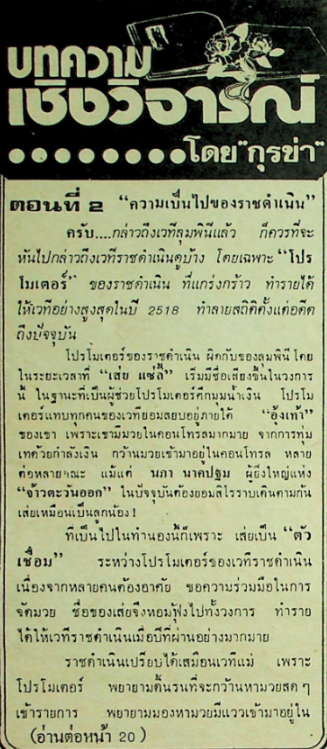
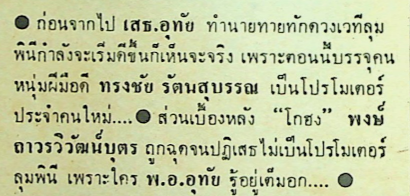

.thumb.jpg.66feff73ac2d19af5c00a84c2a245895.jpg)
-DieselnoiandWichannoi.thumb.jpg.f46e573262d242ecda77a44ba41d1390.jpg)
.thumb.jpg.f9912abc758d47f61585507d840a1ab1.jpg)
.thumb.jpg.5dbe4b5b9583a18bdc3633bc51191087.jpg)
.thumb.jpg.66743d9ccb3b1c7beed8f091d97a258b.jpg)
.thumb.jpg.faa241ef3acdafbeaffba177f058fb28.jpg)
.thumb.jpg.59ae034507d5bcb2ce1a362136d2a64c.jpg)
.thumb.jpg.33b3fa97beb608afb5b12e883196d0b8.jpg)
.thumb.jpg.bc675046512231cb48973349b6fa3f0a.jpg)
-WichannoiandAruchannoi.thumb.jpg.cbba210784ac8755b33489337e6cfc34.jpg)
.thumb.jpg.1914018a341a94617cdf44626929c3d6.jpg)
.thumb.jpg.66bee39d83474b57a516c42d9bee5c89.jpg)
.thumb.jpg.67f129379bdb1a2088e0d8a1113915f6.jpg)
.thumb.jpg.1eab7acabe43219cd41513eb739c584b.jpg)
.thumb.jpg.894649cad6df9b29b2c20304e4527bfd.jpg)
.thumb.jpg.620499810821e8b70d28d9ba3a1f867b.jpg)
.thumb.jpg.9cb04acc3ef5090ef1de07c4cfdb8d7c.jpg)
.thumb.jpg.5a861632726311ebcad5eb92bc5fea75.jpg)
.thumb.jpg.58ebfb417a3edc766abc0b9034a67744.jpg)
.thumb.jpg.f1defab7c95bb7248a323dc9e1c36524.jpg)
.thumb.jpg.4e9694564f157dfe59b8ccb21a007802.jpg)
.thumb.jpg.6acf308285b6d109b7a952db0634730f.jpg)
.thumb.jpg.272efed17dbab14c4598d1c4e1e3c958.jpg)
.thumb.jpg.e9c4ba3baa1cc049e4b1c4f674802b32.jpg)
.thumb.jpg.d7a270e4447e18e9a37c88c68c2dd58d.jpg)
.thumb.jpg.373c8ce93ad729d895957abb03f894e3.jpg)
.thumb.jpg.f42e310c70bc64771d203a140c9bfbf0.jpg)
.thumb.jpg.78f42f538954891f58ce386e34df156a.jpg)
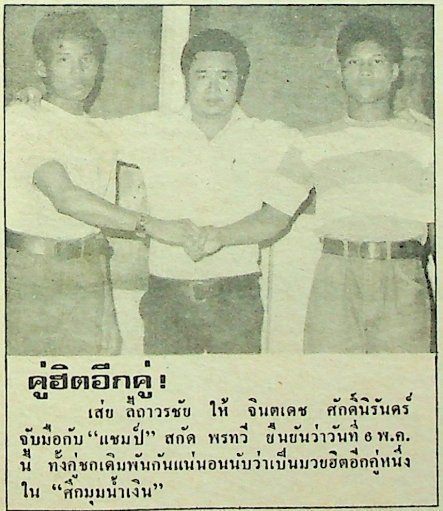
-MuayThaiLibraryProject(3).thumb.jpg.2ab6bdebce9dec16693ff32c4e1f9378.jpg)
-MuayThaiLibraryProject(4).thumb.jpg.c0ea28efb5e84a38d22ba76e3ea97df1.jpg)
-MuayThaiLibraryProject(5).thumb.jpg.7934536649a806f2e705daf6b5f74d67.jpg)
-MuayThaiLibraryProject(6).thumb.jpg.ba73db56bb046cbaf9b86dc2ea91e2be.jpg)
-MuayThaiLibraryProject(7).thumb.jpg.f777f80492c38d49340c0ae8d8442065.jpg)
-MuayThaiLibraryProject(8).thumb.jpg.ce68e61215411d01029e87f6a1f9b876.jpg)
-MuayThaiLibraryProject(9).thumb.jpg.12d402ce69b91099962a49085de7a821.jpg)
-MuayThaiLibraryProject(10).thumb.jpg.120f3908b76048d820913e68150c2de9.jpg)
-MuayThaiLibraryProject(1).thumb.jpg.b134e03a12ffe793a0861fa58b244564.jpg)
-MuayThaiLibraryProject(2).thumb.jpg.c54d0b48f8107283af9131214f619e72.jpg)
-MuayThaiLibraryProject(3).thumb.jpg.b3b539b42ea7850209b839bca34940f9.jpg)
-MuayThaiLibraryProject(4).thumb.jpg.152779029c6679faf0c6c46850b0fb57.jpg)
-MuayThaiLibraryProject(5).thumb.jpg.4ba7edd2035cc5dbaae4a707a53dc0bd.jpg)
-MuayThaiLibraryProject(6).thumb.jpg.a7c714491853cfb62ff6ff9efb8852ad.jpg)
-MuayThaiLibraryProject(7).thumb.jpg.422484b2e029f1822f878b9588d7e362.jpg)
-MuayThaiLibraryProject(8).thumb.jpg.a92f67c8b4175f7e1bc4b0b757fcd8c9.jpg)
-MuayThaiLibraryProject(9).thumb.jpg.2271e2b091f4e33c9a3ef194c0b3a4e2.jpg)
-MuayThaiLibraryProject(10).thumb.jpg.8123ff6ddfb51b72843269ac45778899.jpg)
-MuayThaiLibraryProject(11).thumb.jpg.4320ac569ac05ba25921ab3ae841a521.jpg)
-MuayThaiLibraryProject(12).thumb.jpg.01b33e8cdf56ca69199c4926f0550081.jpg)
.thumb.jpg.c24c015626d6e27303193dddf62c50f6.jpg)
.thumb.jpg.6c66a4cf1ae3a351ef96814b0e45368f.jpg)
PudpadnoiWichannoi.thumb.jpg.bbbb8c657b2dcd03447a1482c97d2604.jpg)
.thumb.jpg.b0ae5ed2b042148b4998e0f4de6da8ec.jpg)
.thumb.jpg.9b5fa8b246d258a879c3f5b3c283e8a6.jpg)
.thumb.jpg.ed7d1b19476b321ed90c19fa718fc883.jpg)
.thumb.jpg.c0f1d9b98eed049e3597f94ae8c899ca.jpg)
.thumb.jpg.6ce4464093e5ff27215e5e58b7395e1f.jpg)
.thumb.jpg.abf09edb7603d6bb52bf6207737fb3ec.jpg)
.thumb.jpg.26cca3fa5b2751a6afc83a1b75167713.jpg)
.thumb.jpg.b54eeefef5fd7ddde4983bb1ed00d8c2.jpg)
.thumb.jpg.cfd9d7026db511e8a2ea7ca1053528bb.jpg)
.thumb.jpg.950f37cf90dbc64dda7561aadfc20d11.jpg)
.thumb.jpg.a447bbad19db441a7e57131d46071c4f.jpg)
.thumb.jpg.dae37bd5254bc9238288a97f0504853e.jpg)
.thumb.jpg.55bf31b7d4cce72c7865398da1b55ccb.jpg)
.thumb.jpg.8c3d2a9c77dd71a4cea51abfdb5a0542.jpg)
.thumb.jpg.a039b3f014260cf72f8e6698f2b46ae1.jpg)
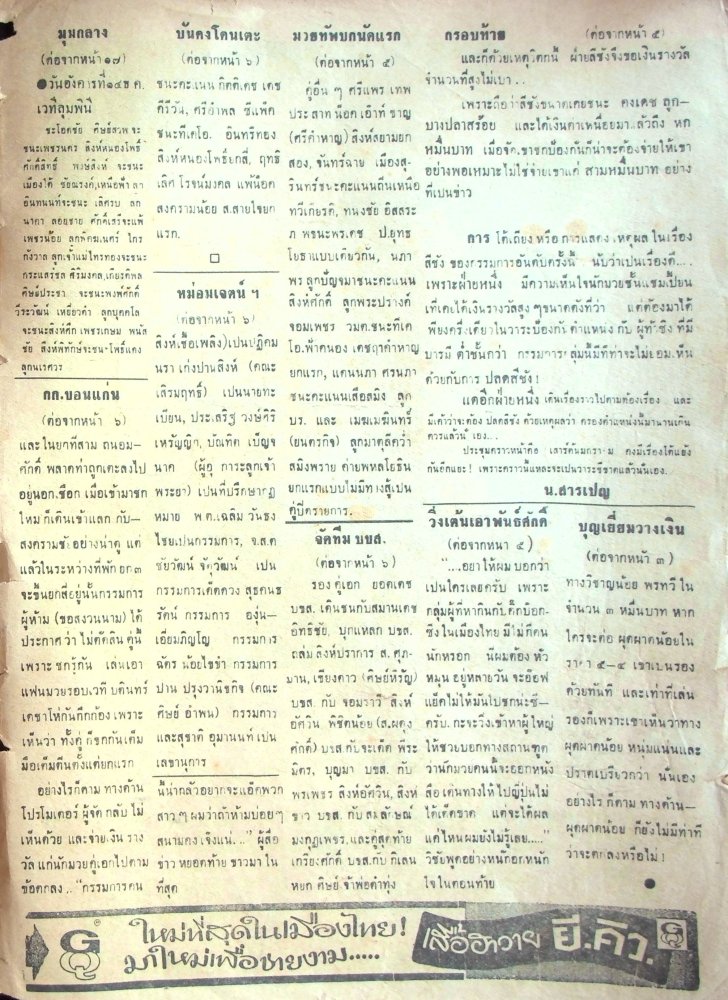
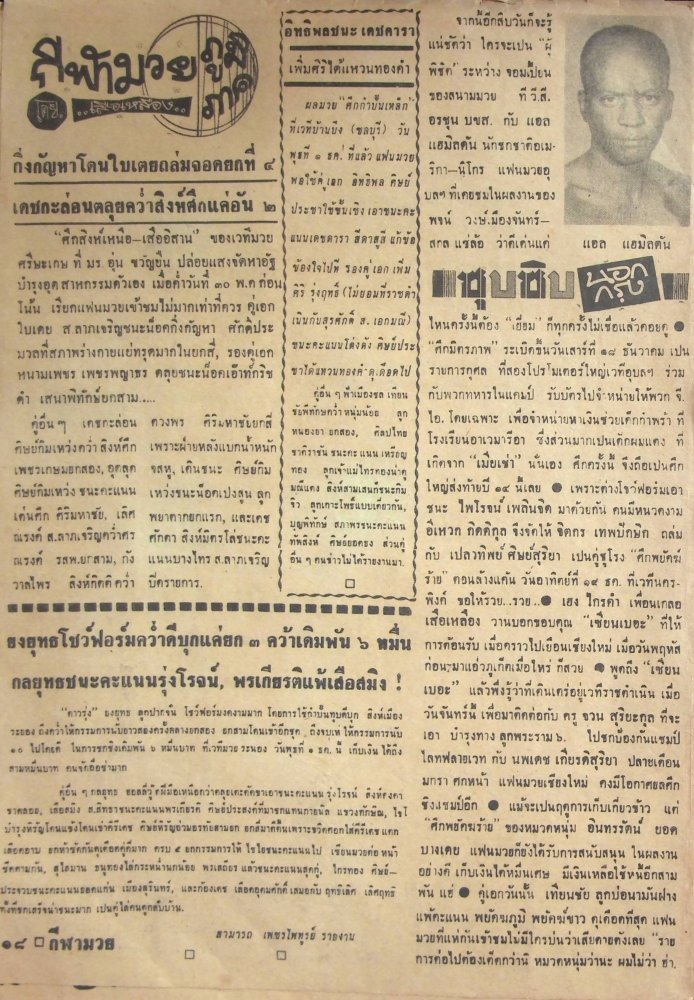
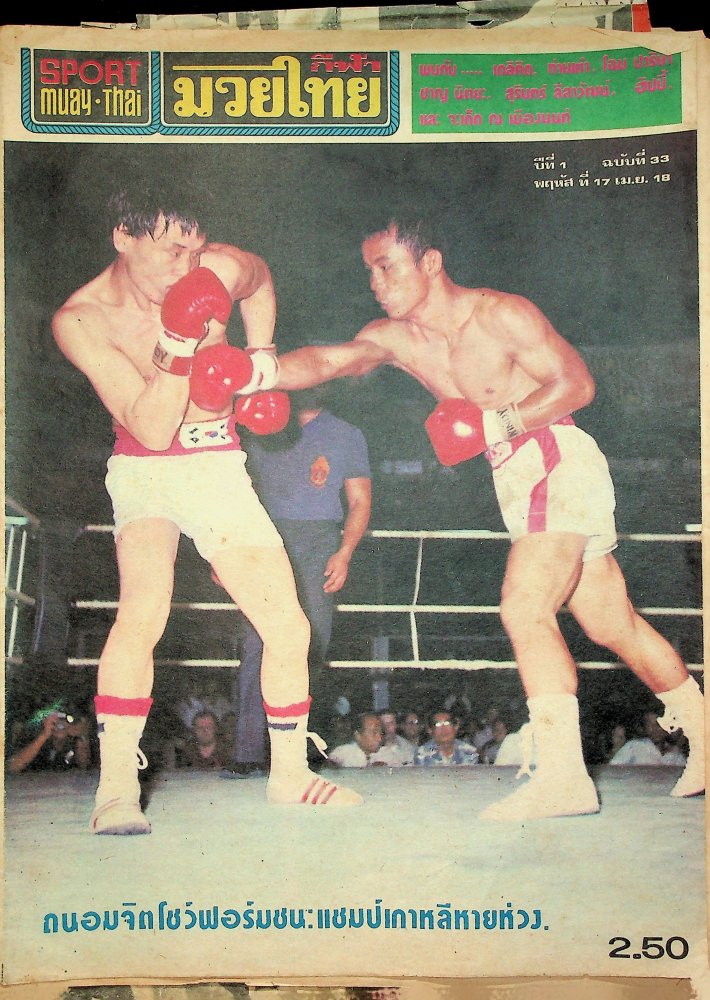
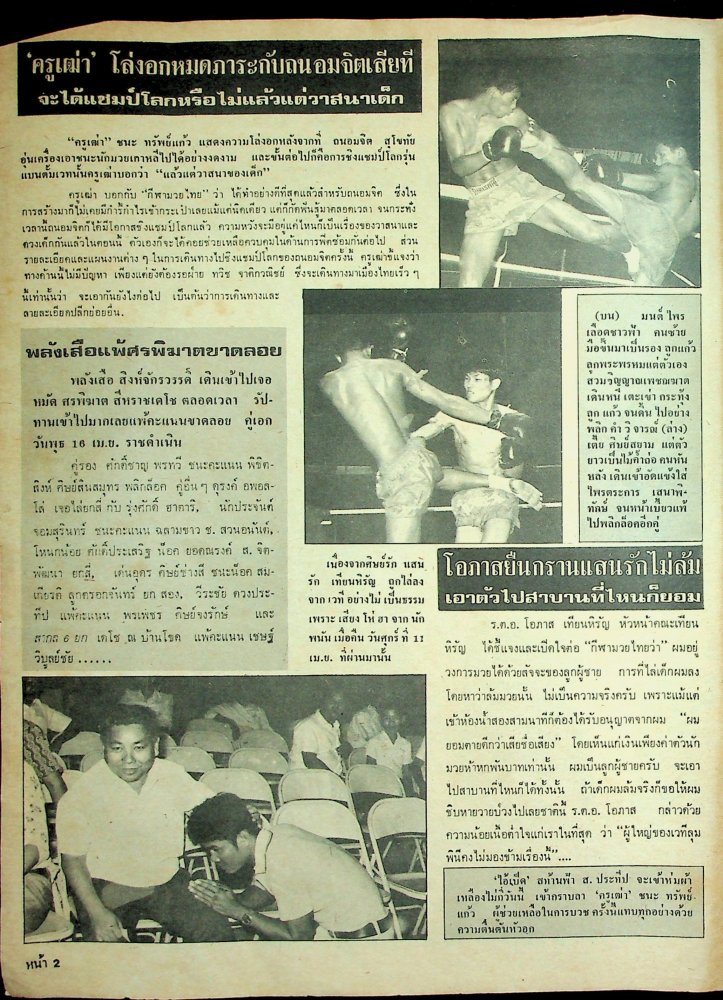
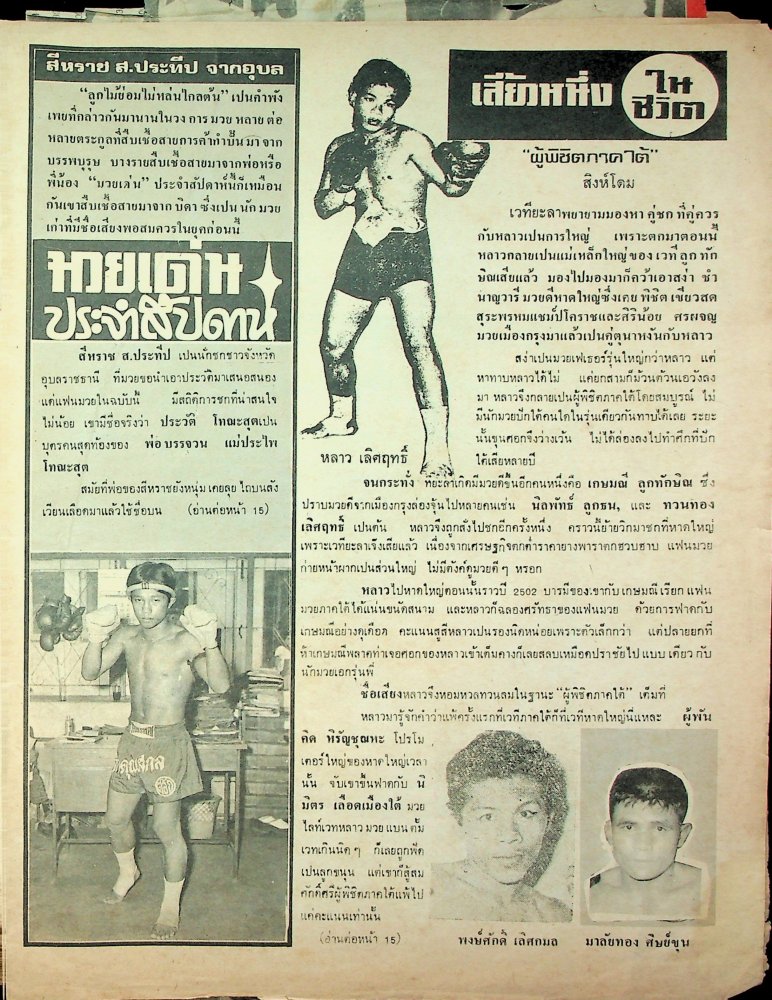
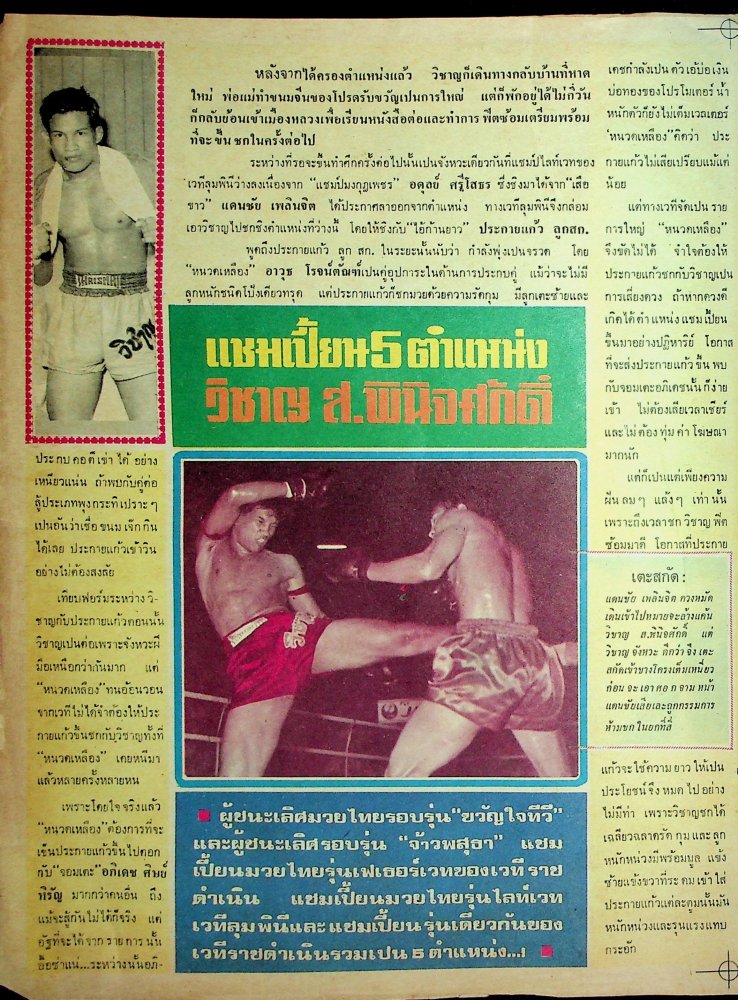
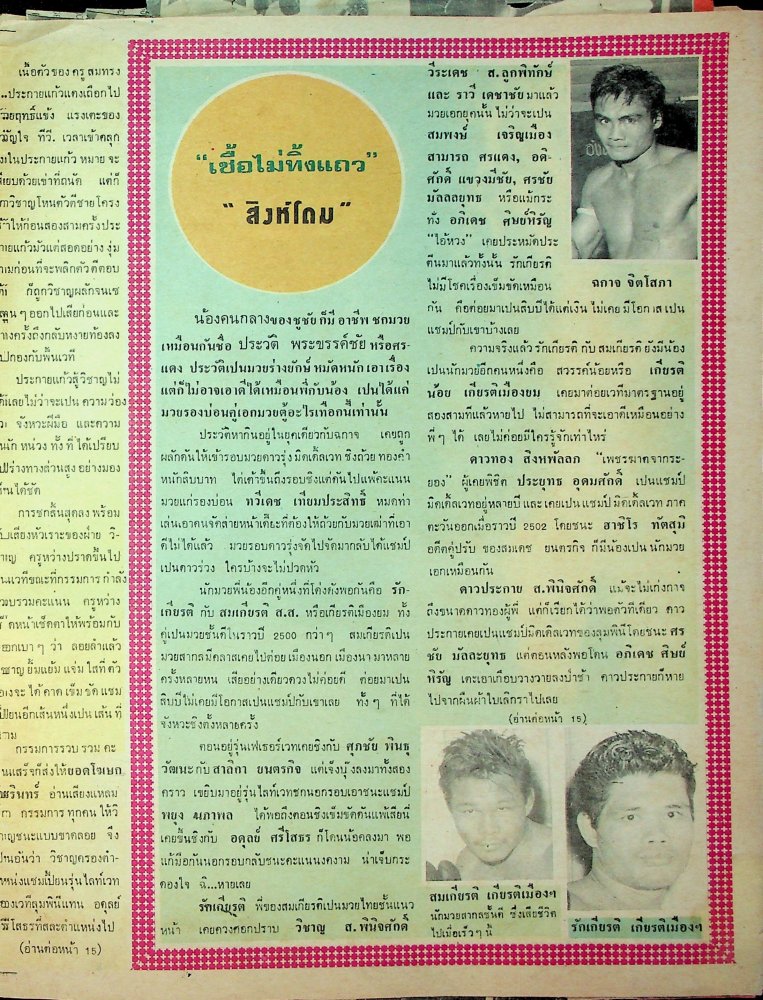

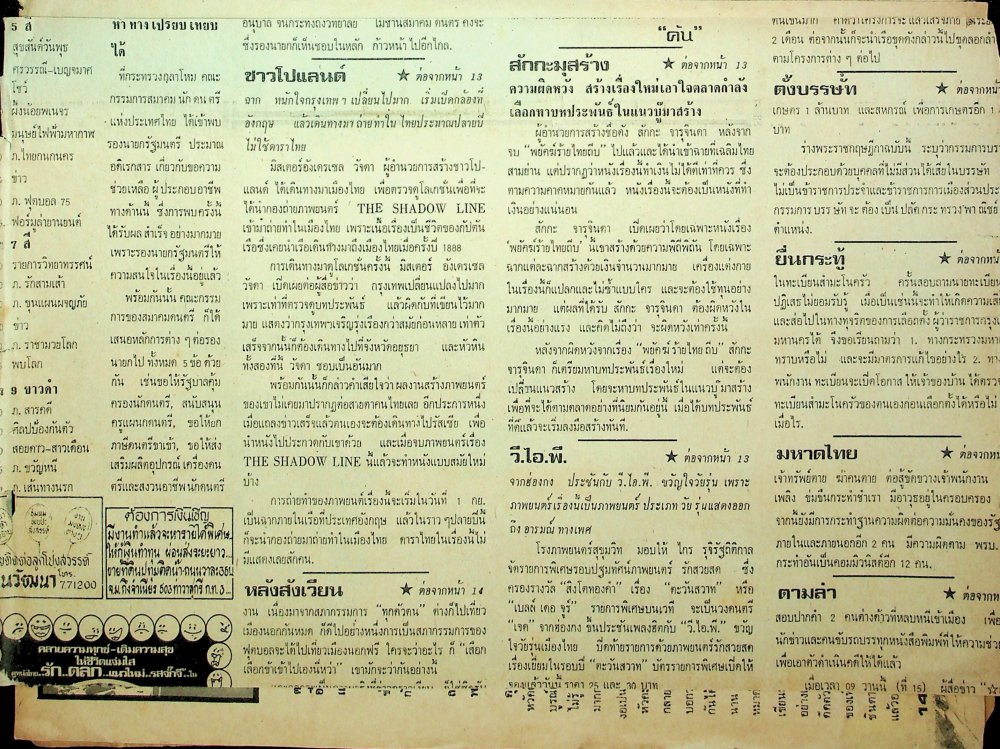

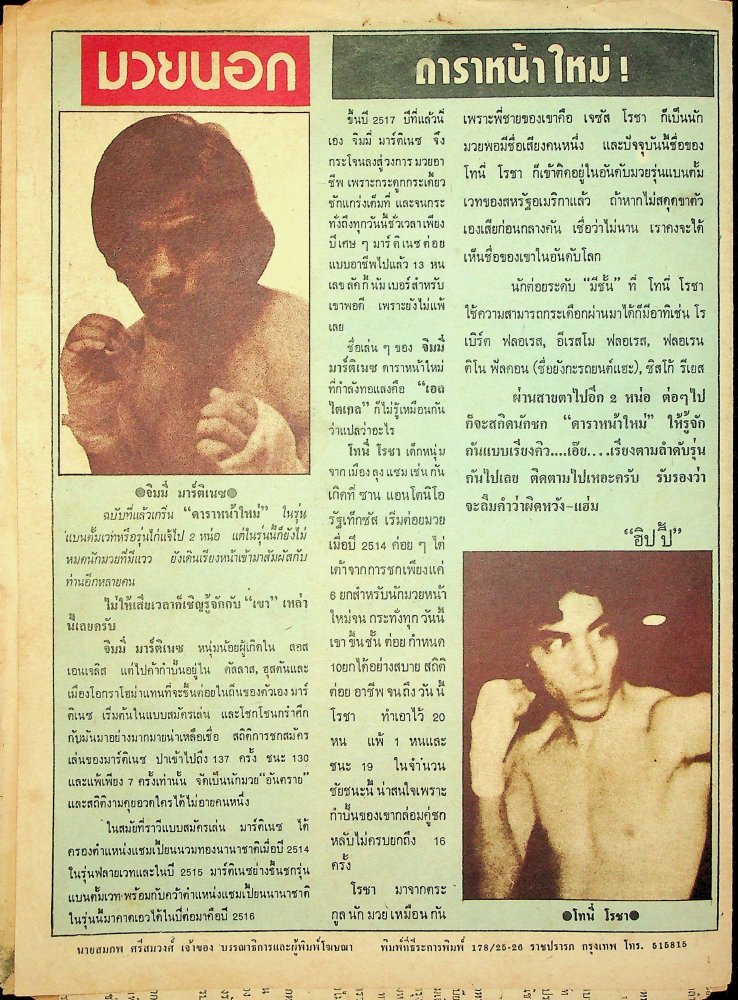

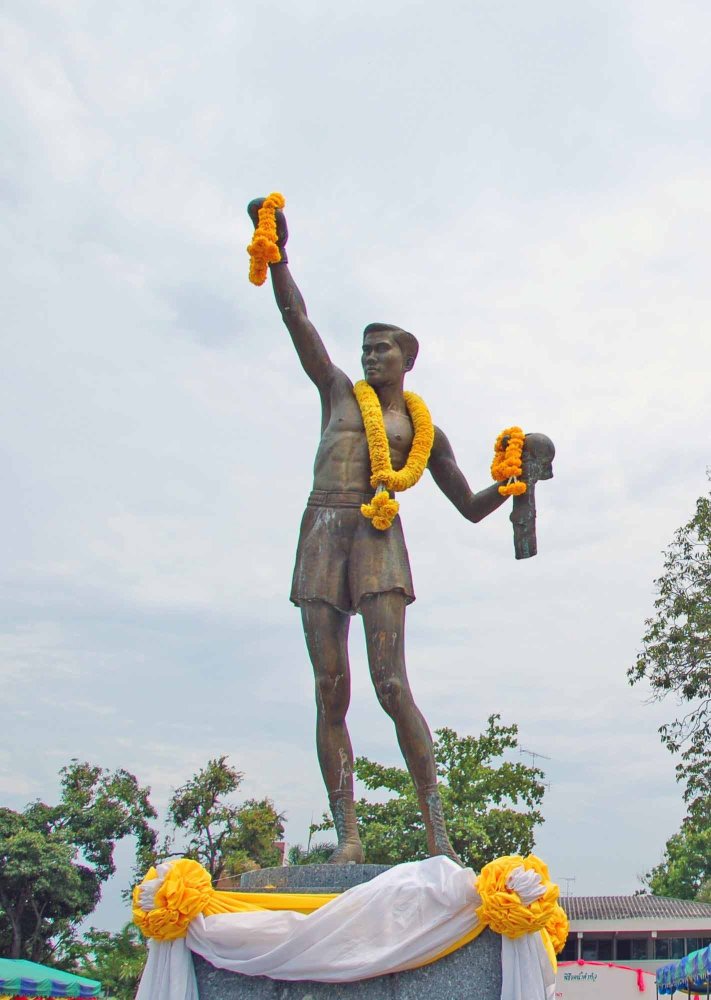
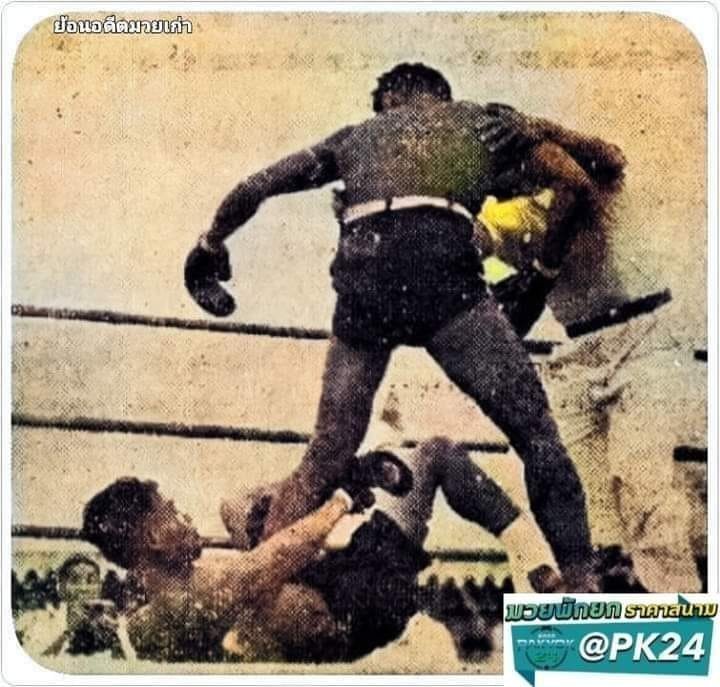

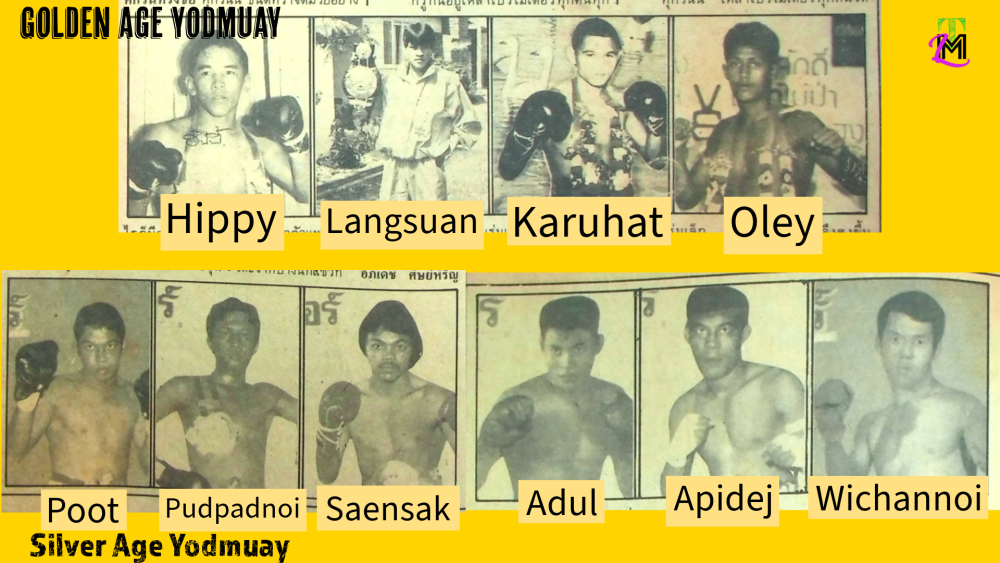
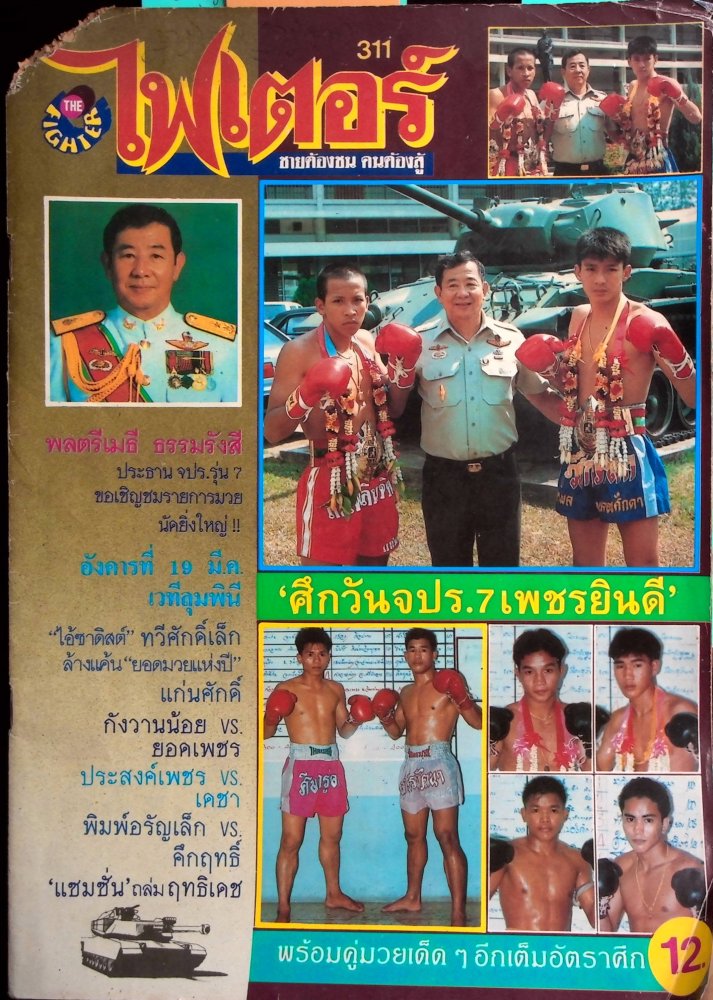
.thumb.jpg.59510ab2122bd332afbc8a5c89c36d33.jpg)
.thumb.jpg.4c4c9351de0142f526057a6fc469f873.jpg)
.thumb.jpg.dee1521a6059e18a09ed7e4a55fad110.jpg)
.thumb.jpg.70f8c5c6a6a4b7a82235c01b723413cb.jpg)
.thumb.jpg.44c2d6b343be965dc00398e81883db2f.jpg)
.thumb.jpg.a3cb03f66bc7819d3b0996a5a152be18.jpg)
.thumb.jpg.79fa5dbb86028c0b56bf7dba714fb969.jpg)
.thumb.jpg.ee99056a8b2d9cf2617a2b556a493231.jpg)
.thumb.jpg.3f384f434cb51ac80e42f693315d5136.jpg)
.thumb.jpg.41f1008c1aa695cf27649effa3c5ce78.jpg)
.thumb.jpg.5a1554c22d3ac7657802ba8827924200.jpg)

